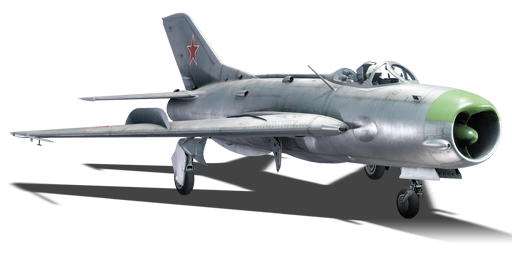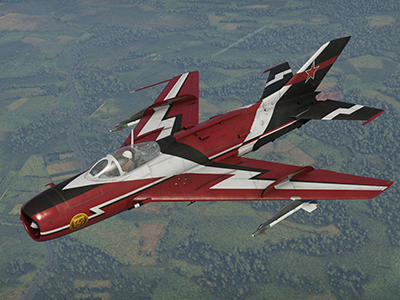



The MiG-19 (NATO Code: Farmer) was a Soviet jet designed during the early 1950s. It was a key component of the Soviet Union's air defense plan and served as a vital complement to fighter-interceptor duties. The MiG-19 was known to be a formidable foe in aerial combat due to its reputation for impressive speed, being the first Soviet-produced aircraft to reach supersonic speeds in level flight, and its respectable manoeuvrability. Although the majority of its service in the Soviet Union was spent on routine interceptions, it is best known for its role in the Vietnam War. As its legacy grew, the MiG-19 underwent continuous refinement, giving rise to a diverse range of variants that extended its service life. Among these was the MiG-19PT, a single MiG-19P modified to carry the R-3S "Atoll" missiles, which showcased the aircraft's adaptability and ingenuity.
The MiG-19PT was introduced in Update 1.85 "Supersonic" and was one of the first three jets to feature guided air-to-air missiles, alongside the F-100D and the Javelin F.(A.W.) Mk.9. In the game, it is best known for its manoeuvrability and speed, which allow it to win against many other aircraft in energy fights. However, amidst its impressive capabilities, it remains crucial to note that the MiG-19PT's lack of countermeasures makes it vulnerable to enemy missile attacks, and astute situational awareness is crucial for its survival.
flaps
flaps
flaps
brake
| Belt | Belt filling | Armor penetration (mm) at a distance: | |||||
|---|---|---|---|---|---|---|---|
| 10 m | 100 m | 500 m | 1000 m | 1500 m | 2000 m | ||
| HEF-I/AP-T/HEF-I/APHE | 48 | 47 | 40 | 33 | 27 | 22 | |
| APHE/APHE/APHE/AP-T | 48 | 47 | 40 | 33 | 27 | 22 | |
| AP-T/HEF-I/HEF-I/HEF-I | 48 | 47 | 40 | 33 | 27 | 22 | |
| Name | Weight | Slot | ||||||
|---|---|---|---|---|---|---|---|---|
| 75.3 kg |  |  | ||||||
| 8 × | 84.1 kg |  |  |  |  | |||
| 114 kg |  |  | ||||||
| 250 kg |  |  | ||||||












Flight performance | |
|---|---|
Survivability |
|---|
Weaponry | ||
|---|---|---|
